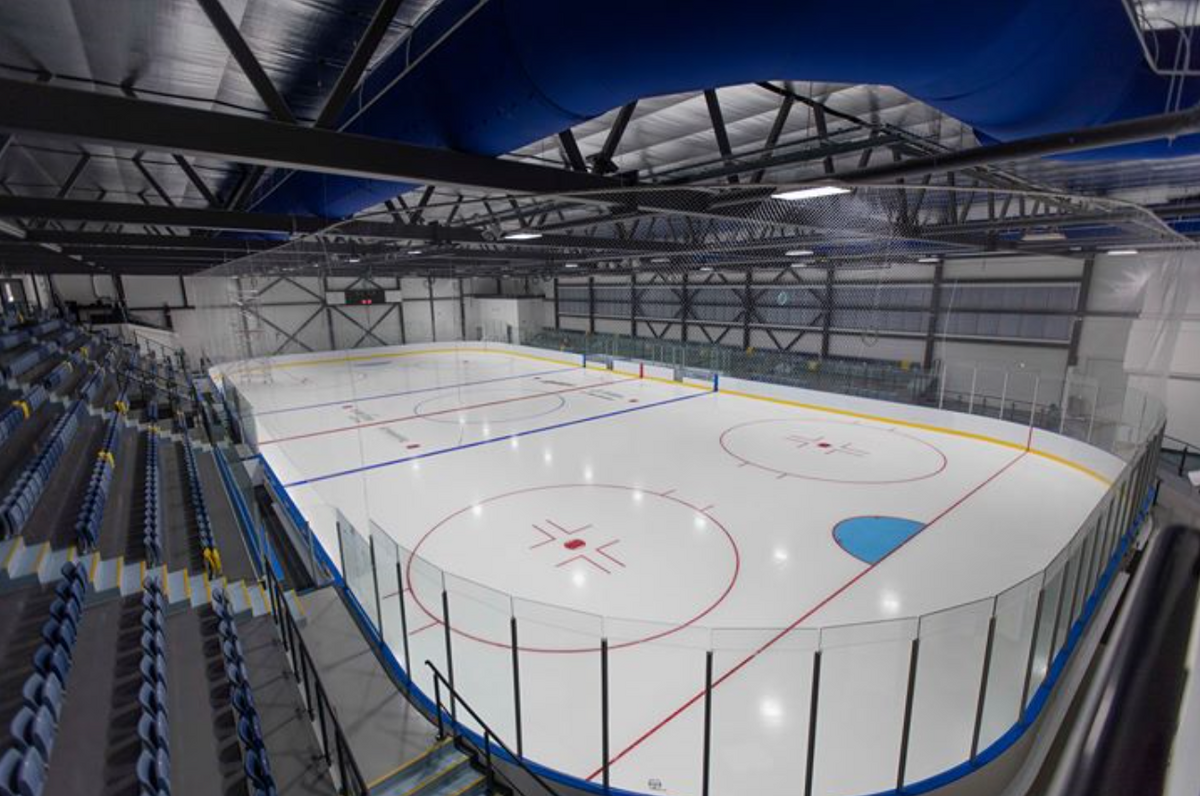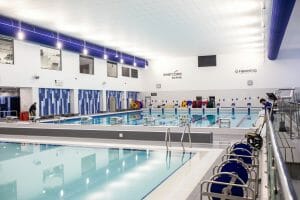
When recreation centre Sapphire Ice & Leisure opened in Romford this January, it became the UK’s first example of an ice rink built on a floor wholly and directly above a heated swimming pool. In building design and construction terms, creating neighbours of two such opposing climates posed unique and complex technical challenges.
For two of the contractors involved – architects Saunders Boston and mechanical and electrical company Kershaw Mechanical Services – their foray into the relative unknown was rewarded though their application to the government’s research and development (R&D) tax credit incentive. Guided by R&D tax credit specialists ForrestBrown, both firms received a financial boost that allowed them to capitalise on the project’s success and invest in business growth.
Ground-breaking design
The project was Havering Council’s largest single investment (£28m) in a borough-wide improvement programme. Work began in 2013 when Saunders Boston were briefed to design a building that would include a 25m, 8-lane swimming pool and separate learner pool, fitness and dance studios, a National Standard ice rink and spectator seating throughout.
The Cambridge-based architects didn’t have the luxury of a large plot of land, which would have permitted designs for a pool hall and ice rink side-by-side. Instead, the plot was a more restricted space in the heart of Romford, so the initial challenge was to find a way of fitting two facilities with fixed, regulated sizes into this limited build space.
“The solution took minutes to arrive at, but months to analyse the implications and prove it would work,” said John Blair, one of the Directors of Saunders Boston Architects.
“Normally you would just have a roof over a pool. But it was quickly apparent that this would not work here. And it would have been even more crackers to try and do it the other way round with the swimming pool above – the structural challenges of trying to hold up that big tank of water. That said, I don’t think it has ever been done like this before. Not the whole project.”
With the working concept agreed on, the architects were presented with a number of technical challenges to address. The priority was to ensure that the two markedly different climates – warm and cold – could co-exist on stacked floors. The condensation risk needed to be analysed in detail, and specialists were enlisted to crunch the numbers.
A ‘floating’ ice rink meant the primary supporting structure needed to span over 25 meters, with the final 2 meters being a cantilever – which added further complication. A complex floor build-up, which included a pre-finished metal deck to act as a high-density vapour barrier, insulation and two layers of concrete, was used and the whole floor was supported by one metre-deep beams which spanned all the way across. These beams ultimately had to be craned in over a busy highway and spliced together in-situ.
The architects also sought to reduce pool glare through a bespoke cladding system, which would need to complement whichever solution for temperature control was decided on.
John added: “I don’t know why, but we have a tendency to attract more complicated projects. We’re already using lessons learned from this project on three current pool projects, adopting some of the same technologies from Romford.”

Controlling temperature
The building’s heating and ventilation system was designed and built by Kershaw Mechanical Services. Discussing the project’s challenges, Gary Smith, the company’s Managing Director, said: “We’ve never worked on a project that required us to accommodate such extremes of temperature and humidity before. What’s more, our challenges were interlinked with those of other contractors, so what would normally be the simplest solution wasn’t always feasible.
“Our solution took about a year to design using our in-house expertise and external consultants. It involved two major plant rooms for the specialist equipment for the two internal environments and one external environment.”
Entering the unknown
With little by way of a precedent on which to base this project, it was R&D-intensive for both contractors, who explored brand new solutions and collaborated with a number of external experts. The R&D tax credit schemes, administered by HMRC, are designed to incentivise businesses to enter the unknown and create innovative products, processes or services. Successful R&D tax credit applications result in a corporation tax rebate, paid in cash, for qualifying projects.
Both contractors were relatively new to R&D tax credits at the time of this project, and had previously believed that their work might not meet its eligibility criteria. Working with ForrestBrown, they both secured cash payments for R&D undertaken on projects including Sapphire Ice & Leisure.
Leigh Follen, Group Financial Controller at Kershaw, said: “We did come across the scheme four years ago, but did not appreciate where we actually fitted in. We thought it was for real prototype stuff. But we came across articles that suggested building information modelling qualified, so we decided to look into it.”
He added: “You can have the best ideas in the world, but they need financial backing. The tax credit has given us the confidence that there is support out there, and it has allowed us to take on more key staff and systems. Knowing that the assistance is there gives us the confidence to keep on pushing into the unknown.”
For Saunders Boston, the tax credit boost helped it invest in staff engagement and reward. John Blair said: “Our first R&D tax credit benefitted us enormously. I’m sure the word cash flow will resonate strongly with most business owners and finance directors. Receiving a sizeable R&D tax credit really helps to manage cash flow. Ours came through shortly before Christmas and made it easier to remunerate our talented employees as we would wish with a Christmas bonus.”
Eligibility
Emily Williams, senior tax manager at ForrestBrown, who handled the claims for both contractors, said: “As the Sapphire Ice & Leisure examples show, construction firms are frequently undertaking R&D during projects. Companies often view this simply as part of the job – solving problems to get things done – whereas R&D is viewed as something done by people in laboratories.
“The number of construction companies actually claiming R&D tax credits is still much smaller than those who qualify, so any project that presents scientific or technological challenges that need solving is definitely worth an initial conversation. Only by discussing projects with specialists, who can clearly explain the government’s guidelines, do many of our clients see that they are eligible.”
ForrestBrown provide the following advice for companies looking to make an R&D tax credit claim:
- Be open minded to what qualifies as R&D. The definition is purposefully broad so that it applies equally to all sectors.
- Don’t be afraid to seek a second opinion on whether your business activity qualifies.
- Identify all qualifying costs. Getting them right is key to maximising a claim.
- Present R&D claims to HMRC clearly using examples to explain how scientific or technological uncertainty was resolved.
- Keeping good (ideally, real-time) records of investment in R&D will make claims more precise.

